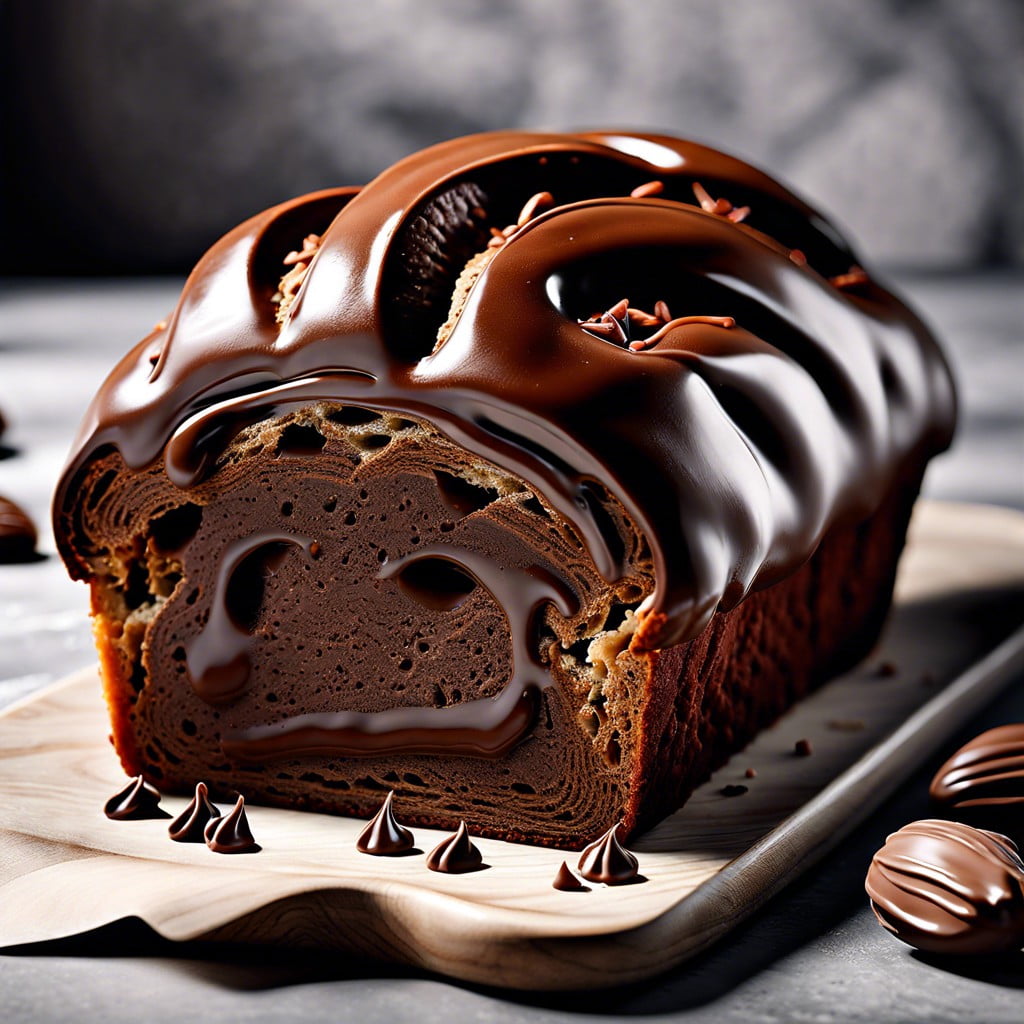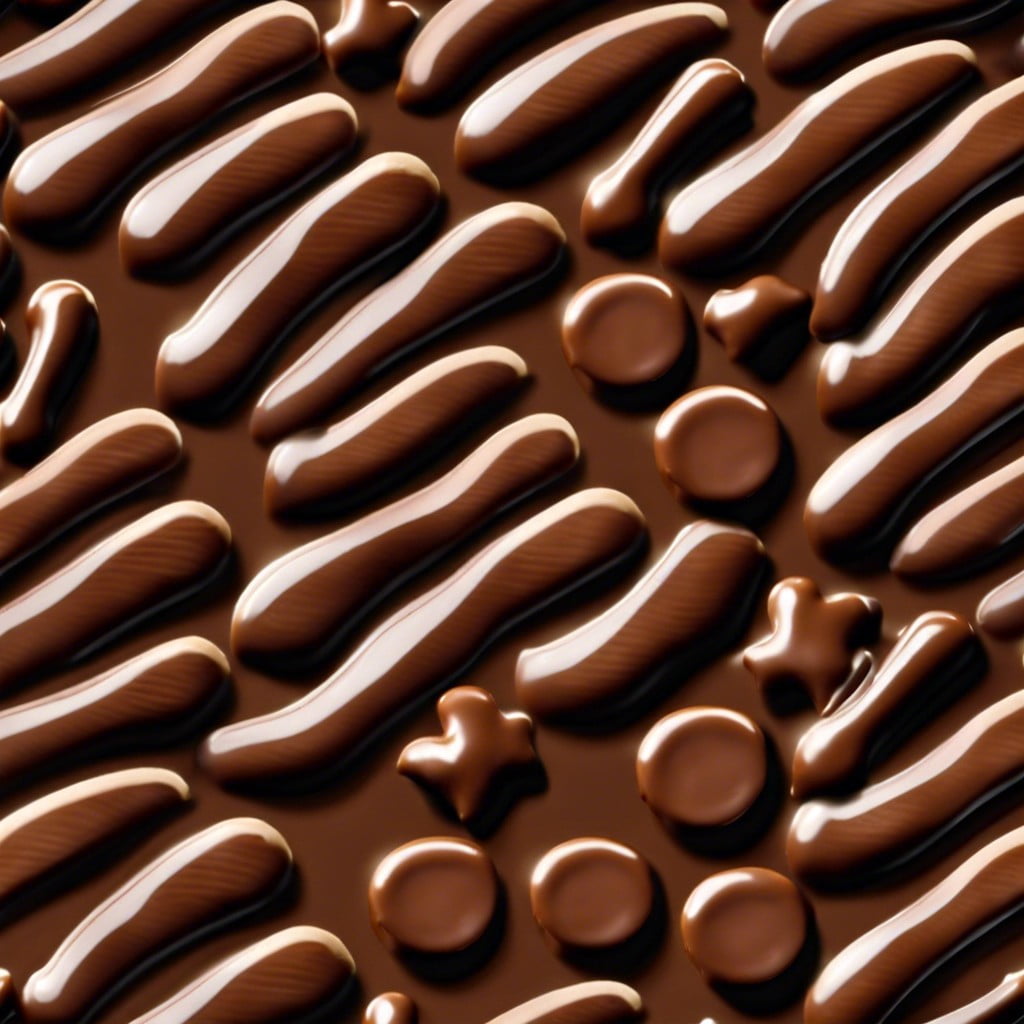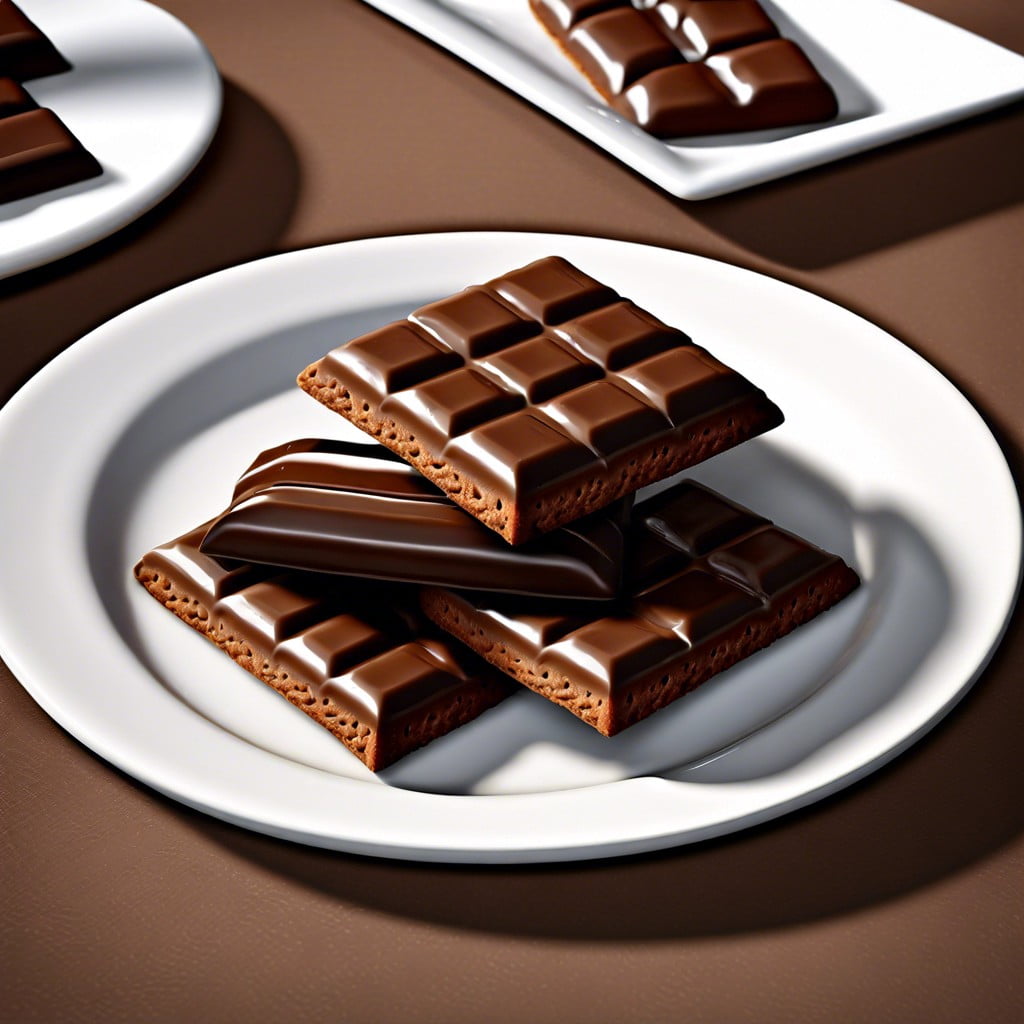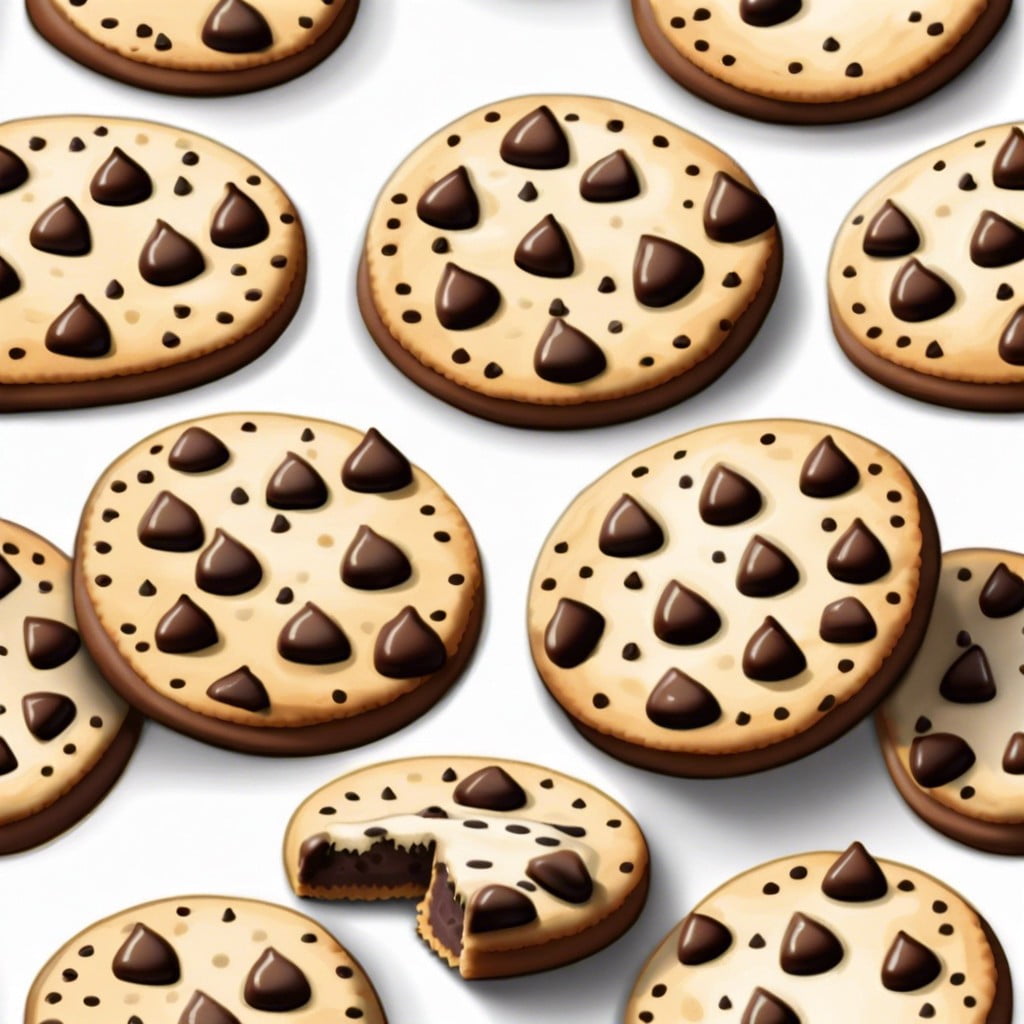Learn how to craft smooth, indulgent chocolate truffles with this straightforward guide.
Key takeaways:
- Start with quality chocolate and cream for rich centers.
- Coat truffles in cocoa powder, nuts, or chocolate for flavor and texture.
- Troubleshoot ganache issues with more chocolate or warm cream.
- Consider chocolate type and origin for unique flavors.
- Store truffles in a cool, dark place and use airtight containers.
Inside
How to Make Chocolate Truffles in 5 Steps
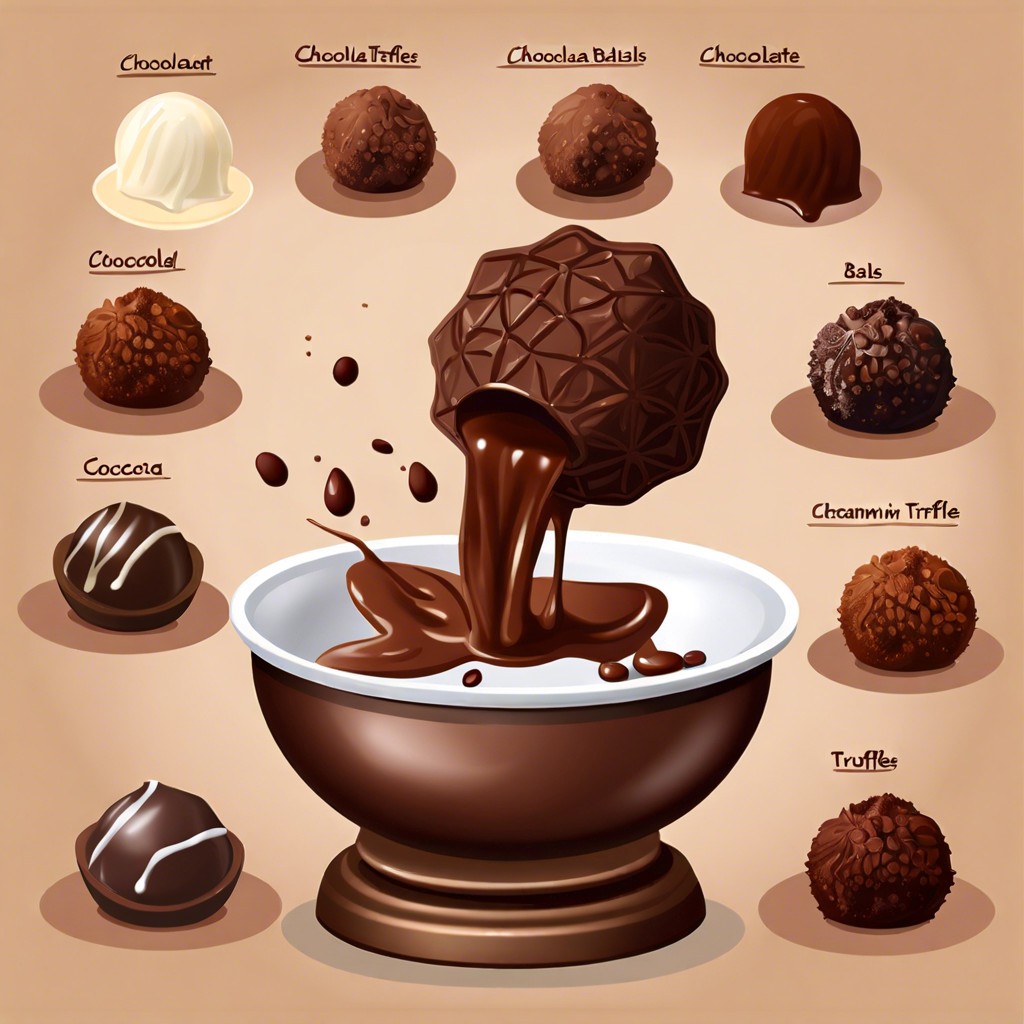
Start with quality chocolate and heavy cream; the ratio is key—typically three parts chocolate to one part cream for a rich, decadent center. Chop chocolate finely for uniform melting.
Heat the cream until it barely simmers, then pour over the chocolate to melt it; stir gently to avoid incorporating air. This emulsification process, called ganache, forms the truffle base.
Cool the ganache until firm yet pliable. Scooping small amounts and rolling them between your palms will yield the classic round truffles.
Coat your truffle balls by rolling them in cocoa powder, chopped nuts, or tempered chocolate. This gives flavor and texture, plus prevents them from sticking to your fingers.
Let the coated truffles set on parchment paper at room temperature. A cool, dry place is best for them to develop the perfect bite—firm on the outside with a melt-in-your-mouth middle.
Troubleshooting Truffles
If your truffles aren’t turning out quite right, don’t fret! With a few tweaks, you can turn a truffle trouble into a triumph.
For starters, if your ganache is too thin, it might not set properly. This could be due to not enough chocolate or too much cream. To fix it, melt a bit more chocolate, then gradually blend it into your ganache until the consistency thickens up.
On the flip side, if your ganache is too thick or crumbly, it’s likely there was too much chocolate or the cream wasn’t warm enough. Gently warm your ganache and add a splash of warm cream. Mix it slowly until the texture smooths out.
Encountering a grainy ganache? That’s often from over-stirring, which can introduce too many air bubbles. The trick is to stir just enough to blend the chocolate and cream. If it’s too late, pass your ganache through a fine-mesh sieve to remove any lumps.
Finally, if your truffles have a dull finish, it might be due to the temperature. Chilling them for too long or not tempering your coating chocolate can be to blame. Aim for a brief chill just to set them, and make sure your dipping chocolate is at the perfect tempering point for that alluring sheen.
Keep these tips in your apron pocket, and your next batch will likely be picture-perfect.
The Origin and History of Chocolate Truffles
Diving straight into the past, the creation of the first chocolate truffle is a sweet accident attributed to Auguste Escoffier in the 1920s. While attempting another dish, his apprentice mistakenly poured hot cream into a bowl of chocolate chunks rather than the intended sugared egg. The resulting mixture hardened. Escoffier found that by rolling it into balls and dusting with cocoa powder, he could replicate the earthy look of prized truffles from the French Périgord region. These delightful bites quickly garnered adoration, forging a path as beloved confections.
Their evolution continued as chocolatiers experimented, leading to three main types: the European, American, and Swiss truffle. Each variant reflects the culture that concocted it—variety extends to ingredients, preparation methods, and even the chocolate’s origin. This rich history remains etched in every silken orb, inviting chocolate lovers to savor a piece of culinary heritage with each decadent morsel.
The Impact of Chocolate Quality On Truffle Flavor
Chocolate is the soul of any truffle, and the type you choose can elevate your creation from tasty to transcendental. High-quality chocolate, rich in cocoa butter, will lend a creamy texture and a depth of flavor that simply cannot be mimicked. The higher the cocoa content, the more intense and less sweet the truffle will taste, offering a sophisticated, indulgent experience.
Consider origin as well – chocolate from different regions carries distinct profiles. For instance, South American chocolate often has fruity undertones, while African chocolate might impart a more earthy note. This variety allows for fascinating flavor experiments.
Additionally, remember that a smooth finish matters. Quality chocolate melts evenly, allowing for a uniform ganache, which is the heart of a truffle. Subpar chocolate could result in a grainy texture, undermining the luxurious nature of your confections.
Finally, don’t overlook the role of personal preference. The best chocolate for your truffles is one that sings to your palate. Taste test various brands and types to find your perfect match – your taste buds (and truffles) will thank you.
Storing and Shelf Life of Homemade Chocolate Truffles
After crafting your velvety indulgences, proper storage is key for maintaining taste and texture. Homemade truffles last longer when shielded from heat and humidity. A cool, dark place like the pantry is ideal, keeping them around 65 degrees Fahrenheit.
Airtight containers are your best friends in the fight against staleness. They ward off unwanted odors and moisture, preserving the truffles’ rich flavors and smooth consistency. If you find yourself without a container at hand, plastic wrap will serve as a decent substitute.
Should you wish to extend their life further, consider refrigeration. Chilling your truffles can add weeks to their lifespan. But be wary. Before serving, always give them time to reach room temperature to prevent condensation from dulling the shine and snap of the chocolate coating.
Freezing is also an option, particularly for ganache-centered truffles. When sealed properly, they can keep up to two months. However, defrost gradually in the fridge to prevent the texture from becoming grainy due to condensation.
Remember, like a well-aged wine, a truffle’s flavor profile can change over time. Some might find the taste deepens, but balance is key. Don’t let them linger too long, or the magic of the initial experience could fade.
In summary, shield your truffles from the elements and they’ll thank you by staying delectable for that much-needed moment of blissful indulgence.
